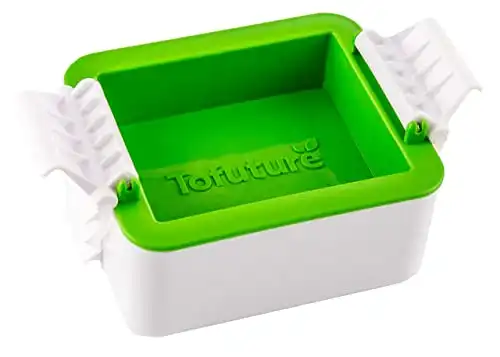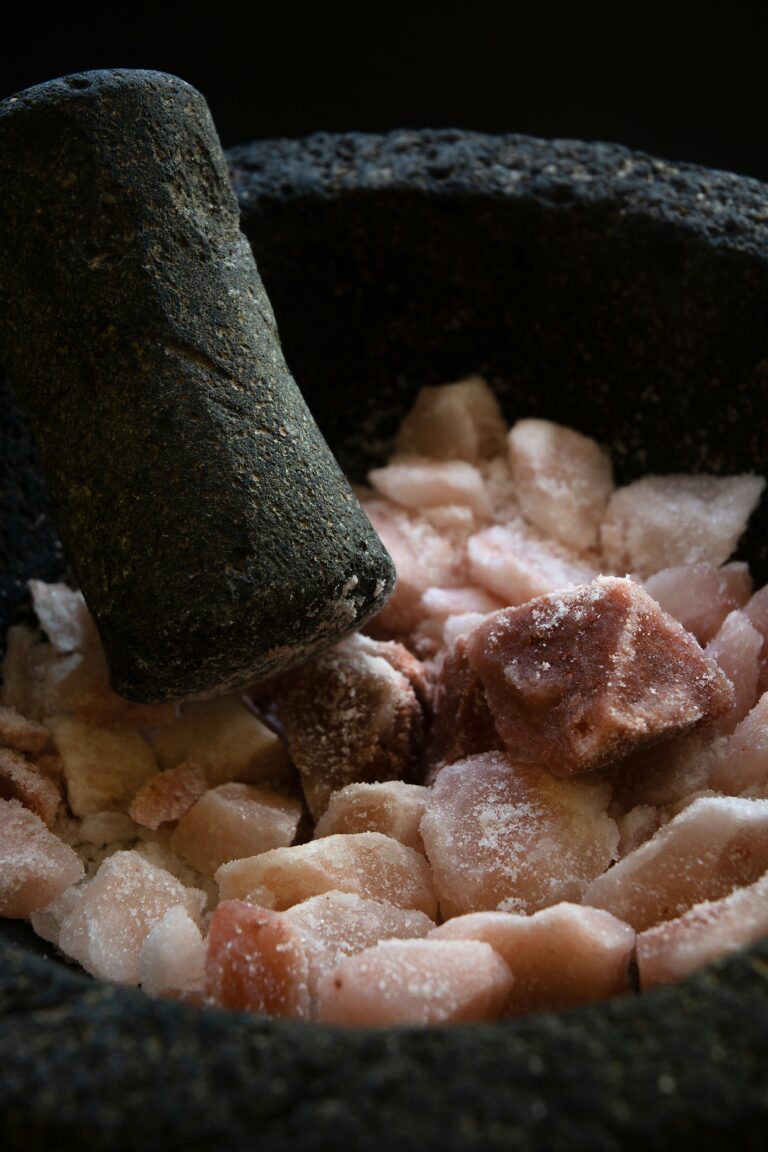5 Tofu Press Tips to Improve Your Plant-Based Cooking
Choosing the right tofu press is crucial for transforming your tofu dishes. Pressed tofu absorbs flavors better, improves texture, and enhances cooking versatility.

When you’re diving into the world of plant-based cooking, a tofu press can be a game-changer, transforming your tofu from soggy to superb. Whether you’re whipping up smoothies or preparing a stir-fry, understanding how to choose the right tofu press is key to unlocking the full potential of your dishes.
Owning a tofu press revolutionizes plant-based cooking by enhancing texture and flavor. Pressed tofu absorbs flavors efficiently, achieving a firmer consistency ideal for various dishes. Unlike unpressed tofu, which can result in lackluster textures, pressed tofu elevates your culinary creations, making it the star ingredient in every dish.
Disclosure: As an Amazon Associate, this site earns from qualifying purchases. Thank you!
Key Features to Look for in a Tofu Press
Choosing the right tofu press can turn your tofu from bland to grand. Let’s dive into the essential features that can make or break your tofu press experience.
- Design: Look for even pressure distribution in spring-based models or adjustable firmness in screw-top designs. Simpler designs ensure consistency and ease of use.
- Material: Choose stainless steel for durability and safety, avoiding potential chemical leaching found in some plastics.
- Ease of Use and Cleaning: Opt for dishwasher-safe models with features like drainage platforms for effortless cleaning and pressing.
- Additional Features: Consider features like drainage trays and fold-out wings for improved usability and functionality.
Keep these features in mind by investing in a tofu press that elevates your culinary creations.
How to Choose the Right Tofu Press for You

Choosing the right tofu press isn’t just about squeezing water out; it’s about matching your kitchen lifestyle to the gadget that’ll make your tofu dreams come true. Let’s navigate through the must-knows to pin down your perfect press.
Assessing Your Kitchen Space and Tofu Consumption
Consider your kitchen space and tofu consumption habits when choosing a tofu press. If space is limited, opt for a compact design that’s easy to store. For frequent tofu users, a sturdier, larger model may be more suitable. Assessing your tofu consumption will help you invest in a press that becomes an essential tool in your kitchen.
Budget Considerations
Consider your budget when choosing a tofu press. There are options available for every price range, from affordable models for beginners to higher-end presses with extra features for long-term investment. Aim to find the best value for your money by balancing cost with your tofu press requirements and preferences.
Reviews and Recommendations
Don’t overlook the importance of reviews and recommendations when choosing a tofu press. User feedback can provide valuable insights into usability, cleaning, and any quirks. Trusted recommendations from food bloggers, chefs, and tofu enthusiasts can also guide you toward presses that deliver on their promises. A well-reviewed press can elevate your tofu preparation game.
How to Use a Tofu Press Effectively
So, you’ve snagged yourself a shiny new tofu press? Excellent move. Let’s dive into the nitty-gritty of using it to whip up some tofu magic in your kitchen.
Preparing Your Tofu
Before anything else, make sure your tofu is ready for the press. Here’s the drill:
- Choose the Right Tofu – Opt for a firm or extra-firm tofu, as these varieties hold up best under pressure and are less likely to crumble.
- Drain Initial Water – Open your tofu package and drain out all the water. This step makes the pressing process more efficient.
- Slice for Speed – Cut your block into smaller pieces if you’re in a hurry. Thinner slices mean less pressing time.
Optimal Pressing Time for Different Textures
Pressing time can make or break your tofu’s texture. Here’s what you need to know:
- For Firmer Tofu – Aim for at least 30 minutes, though an hour is ideal. This density level is perfect for grilling or frying.
- For Softer Textures – Press for 15 to 20 minutes. It’s great for stir-fries or dishes where you want a softer interior.
- Experiment – The beauty of tofu lies in its versatility. Feel free to adjust the pressing time based on your recipe or personal preference.
Cleaning and Maintaining Your Tofu Press
Keep your tofu press in top-notch condition with these tips:
- Clean After Each Use – Most presses are dishwasher safe, but always check the manual first. If hand washing, use gentle soap and water.
- Dry Thoroughly – Avoid mold and mildew by drying your press completely before storing.
- Regular Checks – Inspect your press for any wear and tear. Replacements for parts like springs or knobs may be available, extending the life of your press.
DIY Tofu Press Options
If you’re not ready to commit to a store-bought tofu press or simply love a good kitchen project, making your own tofu press is a practical and satisfying option. Let’s dive into how you can create a bespoke tofu press with items you likely already have at home.
Materials You’ll Need
Before you start, gather these items to build your DIY tofu press:
- Two Cutting Boards: Preferably the same size, these will form the top and bottom of your press.
- Paper Towels or a Clean Kitchen Towel: These will absorb the water pressed out from the tofu.
- A Heavy Object: Think canned goods, a heavy skillet, or a large book. This will act as the weight to press down the tofu.
- Optional: Elastic Bands or Twine: If you want to secure the whole setup, elastic bands or twine can keep the boards together.
Follow these simple steps, to elevate your plant-based cooking game effortlessly.
- Wrap Your Tofu: Start by wrapping your block of tofu in a layer of paper towels or a kitchen towel. This layer is crucial for absorbing the excess moisture.
- Set Your Base: Place one cutting board on a flat surface. This will be the base of your tofu press.
- Position the Tofu: Lay the wrapped tofu on the center of the base cutting board.
- Form the Press: Place the second cutting board on top of the wrapped tofu, creating a sandwich-like structure. Ensure the boards are aligned.
- Add Weight: Place your heavy object on top of the upper cutting board. The weight should be distributed evenly to press the tofu uniformly.
- Wait: Allow the tofu to be pressed for at least 30 minutes. For firmer tofu, you may want to leave it for an hour or more. Just remember, the longer the press, the firmer and more flavorful the tofu.
- Check and Cook: Unwrap the tofu and feel its firmness. If you’re satisfied with the texture, your tofu is ready to be cooked. Enjoy experimenting with various weights and pressing times to find your perfect tofu texture.
Storing Pressed Tofu

Once you’ve mastered the art of using a tofu press, and your tofu is perfectly pressed, the next step is ensuring it’s stored correctly. Proper storage is crucial for maintaining the tofu’s texture and flavor, whether you’re planning to cook it immediately or save it for future recipes.
Refrigeration Guidelines
After pressing your tofu, if you’re not going to use it right away, you’ll want to store it in the refrigerator. First, wrap the pressed tofu in a clean, dry paper towel or a clean kitchen cloth. This step helps absorb any residual moisture, keeping your tofu from becoming soggy. Next, place the wrapped tofu in an airtight container or a resealable plastic bag. If you opt for a container, pour in enough cold water to cover the tofu completely. This water prevents the tofu from drying out and helps preserve its texture.
You should change the water daily to keep the tofu fresh. Properly stored, refrigerated, pressed tofu can last up to a week. Remember, the key to longevity is ensuring the tofu remains submerged in clean water within your fridge, away from strong-smelling foods that could alter its flavor.
Freezing Tips for Long-term Storage
Freezing pressed tofu is a fantastic way to extend its shelf life while maintaining its texture and flavor improvements. In fact, freezing can make the tofu even firmer and chewier, making it excellent for heartier dishes. To freeze your pressed tofu, start by drying it as much as possible after pressing. Once dry, cut the tofu into slices or cubes, depending on your planned use. Spread the pieces on a baking sheet, ensuring they’re not touching, and freeze them for about two hours in a single layer.
After the initial freeze, transfer the tofu pieces to a freezer-safe airtight container or a resealable plastic bag. If you’re using a bag, try to remove as much air as possible before sealing to prevent freezer burn. Label the container or bag with the date, and your tofu will be good for up to five months in the freezer. When you’re ready to use your frozen tofu, thaw it in the refrigerator overnight or defrost it in the microwave if you’re short on time.
Frozen and then thawed tofu absorbs marinades and sauces more effectively, making it an ideal option for flavorful dishes. Plus, its texture is perfect for frying, sautéing, or grilling. By following these refrigeration and freezing guidelines, you’ll ensure your pressed tofu is delicious, safe, and ready for whatever recipe you’ve got in mind.
Frequently Asked Questions
How do you know if tofu is pressed enough?
Tofu is considered pressed enough when it holds its shape well, indicative of firm and extra-firm varieties where some moisture has already been extracted. The key is achieving a texture that’s not too moist and that resembles the consistency you aim for in your final dish.
Should I slice tofu before pressing?
Yes, slicing tofu before pressing can be beneficial. Andrea Nguyen, a food writer and cookbook author, recommends cutting tofu into playing-card-sized and half-inch-thick slices before pressing. This allows for more even moisture removal and can help in achieving a better texture.
Which tofu is best for frying?
For frying, extra-firm tofu is the best option. It’s produced and packaged with very little liquid compared to softer varieties, meaning it holds its shape better during frying. Firm tofu can also work, but extra-firm tofu is preferable for its minimal moisture content.
What are the different types of tofu presses?
Tofu presses are available in materials like plastic, bamboo, and stainless steel. Plastic presses are generally more affordable, easy to use, and simple to clean. Bamboo presses offer anti-bacterial properties and are eco-friendly, making them a favorite among environmentally conscious individuals.
How far in advance should you press tofu?
For optimal texture, especially in recipes like crispy tofu nuggets, pressing tofu for at least 30 minutes to an hour before cooking is advised. While some recipes may skip this step, taking the time to press tofu can significantly improve the outcome.









